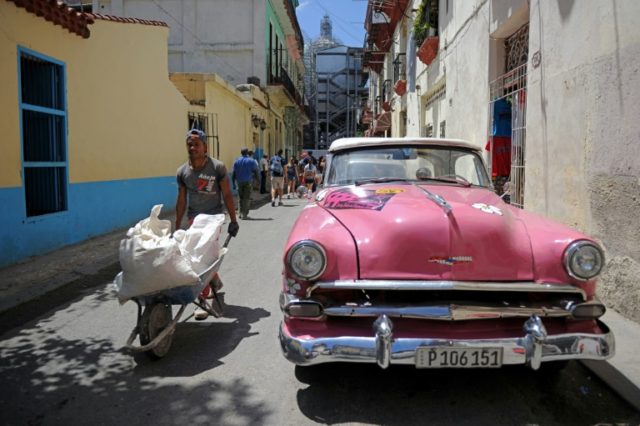Havana (Cuba) (AFP) – In 2018, a Cuban can run his own business, surf the internet and travel abroad with fewer restrictions.
In 10 years, President Raul Castro has transformed the Cuba he inherited from brother Fidel but his reforms haven’t unleashed a hoped-for economic takeoff.
Now 86, Raul Castro will on April 19 hand power to a new generation, a decade after cautiously embarking on a series of reforms.
Although they had a major impact, the government admitted last month there had been “errors” and delays in implementing the plans.
“We have seen that these overly gradual changes haven’t worked and that should warrant bolder moves,” Cuban economist Pavel Vidal, an expert at the Cali branch of Javeriana University, told AFP.
Here is a summary of some of the tasks awaiting Castro’s successor and a list of what he managed to achieve.
– Monetary unification –
“This has taken us too much time and we can’t put it off any longer,” Castro told parliament in December, referring to Cuba’s unique dual currency system.
For more than 20 years, the country has lived with both the convertible peso (CUC), which is worth the equivalent of $1, and the Cuban peso (CUP), is worth less than 4 cents. It also has preferential exchange rates for state companies, a situation which creates distortions, experts say.
– Agricultural reform –
In 2008, Castro declared food production to be “strategic,” and in a decade the government turned over more than one million hectares of land to private farmers, while also granting micro-credits and improving producer prices.
But the takeoff has been slow: Cuba still imports 80 percent of the food it consumes, worth some 2 billion dollars.
– Private enterprise –
In 2010 Castro expanded and made the private workforce more flexible. Today 580,000 Cubans — 12 percent of the work force — are self-employed, although the government had aimed to remove at least one million employees from its bulky state payroll in the first five years.
The legalization of small- and medium-sized private businesses and resuming issuing licenses for new ventures are measures still pending.
– Foreign investment –
Castro brought in reforms to provide more incentives to investors and inaugurated a huge port complex at Mariel, 45 kilometers (30 miles) west of Havana — a duty-free zone described as destined to become Cuba’s main industrial hub.
As of the end of 2017, it had lured foreign investment to the tune of $1.2 billion. But that is below the $2.5 billion the country needs per year to shore up its growth, according to official figures.
– Thaw with US –
Raul Castro made his piece of history on December 17, 2014, when he went on TV to tell the Cuban people — as Barack Obama did with Americans — that relations between the two countries would be restored after a half century freeze stemming from the Cold War. In March 2016, Castro welcomed Obama in Havana. Things have cooled off since Donald Trump became president in January 2017, however.
– Foreign debt –
Between 2013 and 2016 Cuba restructured its debt by making $23 billion in payments, through which it is expecting new loans. In late 2015, Havana renegotiated its debt with the so-called Paris Club of creditors. That debt had been frozen since 1980, with $8.5 bln forgiven and Cuba committing to paying $2.6 billion over 18 years. Cuba also refinanced debt with Russia and Mexico.
– Immigration –
In 2013 Castro did away with complicated travel restrictions and allowed Cubans to remain away from the island for up to two years, so long as they do it legally, without losing their property or residency rights. The change facilitates visits and repatriation of those who left the island. From January 2013 to December 2016, more than 670,000 Cubans made more than a million trips abroad.
– Sales –
Raul Castro allowed sales and purchases of used cars and homes, which had been banned. Through 2014, this totaled 80,000 vehicles and 40,000 homes, according to official figures.
– Internet-
Cuba allowed internet access from public areas with Wifi. There are also four million cell phone lines in operation and the state phone company hopes to offer 3G service this year. However, Cuba is among the most backward countries in the world when it comes to internet connectivity.

COMMENTS
Please let us know if you're having issues with commenting.